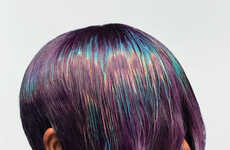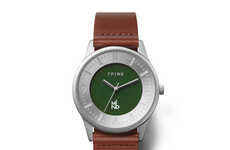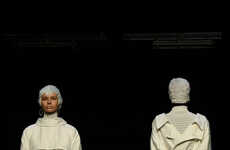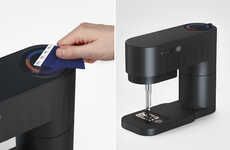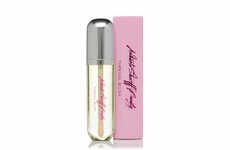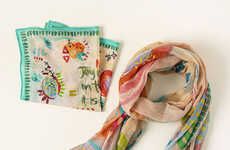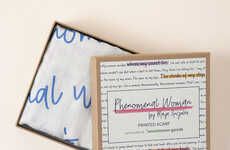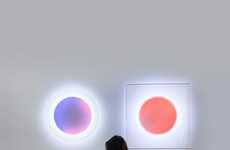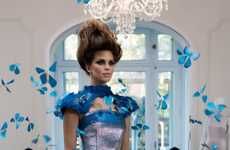
The 'Chameleon Mood Scarf' Changes Based on Mood, Light and Temperature
Katherine Pendrill — June 18, 2015 — Art & Design
The 'Chameleon Mood Scarf' is made from innovative textiles that change based on mood, light and temperature. Inspired by the color-shifting abilities of the chameleon, this scarf beautifully projects the feelings of those who wear it.
Similar to a chameleon’s skin, the Chameleon Mood Scarf is of several distinct layers of fabric. Each layer features a unique color and pattern that has been printed with different types of high-tech ink. It is the use of these revolutionary ink sensors that causes changes based on mood and environmental factors such as light and temperature. The overall effect is that the scarf will have a dramatically altered experience at different moments in time.
Not only is the Chameleon Mood Scarf beautiful, but it also feels extremely luxurious. Made from 100 percent silk chiffon, the scarf is appropriate for wearing in both hot and cold climates.
Similar to a chameleon’s skin, the Chameleon Mood Scarf is of several distinct layers of fabric. Each layer features a unique color and pattern that has been printed with different types of high-tech ink. It is the use of these revolutionary ink sensors that causes changes based on mood and environmental factors such as light and temperature. The overall effect is that the scarf will have a dramatically altered experience at different moments in time.
Not only is the Chameleon Mood Scarf beautiful, but it also feels extremely luxurious. Made from 100 percent silk chiffon, the scarf is appropriate for wearing in both hot and cold climates.
Trend Themes
1. Color-shifting Textiles - Innovative textiles that adapt based on mood and environmental factors are disrupting the fashion industry with exciting, engaging, and interactive possibilities.
2. Multi-layered Fabric Technology - Using multiple layers of fabric, designers can explore new avenues for mood-based wearables and coordinated fashion lines.
3. Biometric Wearables - Exploring other wearable biometric sensors beyond heart rates, skin conductivity, and temperature is enabling intriguing mood-based design concepts.
Industry Implications
1. Fashion & Style - The fashion industry can benefit from using smart textiles to create marvelous mood-sensitive designs, a creative enhancement to the fashion industry.
2. Health & Wellness - The healthcare industry can explore new applications of biometric wearables, allowing people to interpret their moods by monitoring physiological signals provides exciting opportunities to improve wellness.
3. Entertainment & Events - Creating mood-sensitive textiles can enhance entertainment, including themed events, museums, theaters, performance art, and film costumes.
4.9
Score
Popularity
Activity
Freshness


